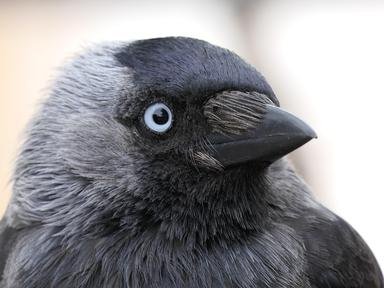Quiz Answer Key and Fun Facts
1. A frequent visitor to my garden is a little brown bird with the scientific name Passer domesticus. What is this bird more commonly known as?
2. A less welcome visitor to my garden is a black and white bird with a very long wedge shaped tail that has a loud, strident call. With the scientific name Pica pica, who is this bird?
3. Another frequent visitor to my garden is a small bird with a blue cap, wings and tail, a yellow chest and a black eyestripe. Its scientific name is Cyanistes caeruleus. Who is this handsome visitor?
4. A welcome guest to my bird table is an olive green bird with bright yellow patches on its wings and tail. Similar in size to a house sparrow and with the scientific name Carduelis chloris what type of bird is this?
5. An all year round visitor to my garden is a bird which is able to mimic the calls of other birds and even car alarms and mobile phones. With the scientific name Sturnus vulgaris what is this entertaining breed?
6. One of the most widespread species of bird in Britain is a small brown bird that appeared on the old British coin, the farthing. Who is this visitor to my garden, one of the UK's smallest birds?
7. Another welcome visitor to my garden is a little bird with a red breast that is often associated with Christmas. Which breed of bird is this?
8. A handsome visitor to my garden is a small bird, the size of a house sparrow, which has a brown back, a blue-grey head and a pinkish-brown breast and cheeks. With the scientific name Fringilla coelebs, who is this attractive bird?
9. Another frequent visitor to my garden is a bird that is sometimes referred to as the "Storm Cock" due to its tendency to sing to welcome bad weather. Who is this bold bird?
10. Another visitor to my garden is named for the male of the species which has matte black plumage, a bright yellow beak and a yellow ring around the eye. What type of bird is this?
Source: Author
clevercatz
This quiz was reviewed by FunTrivia editor
rossian before going online.
Any errors found in FunTrivia content are routinely corrected through our feedback system.
